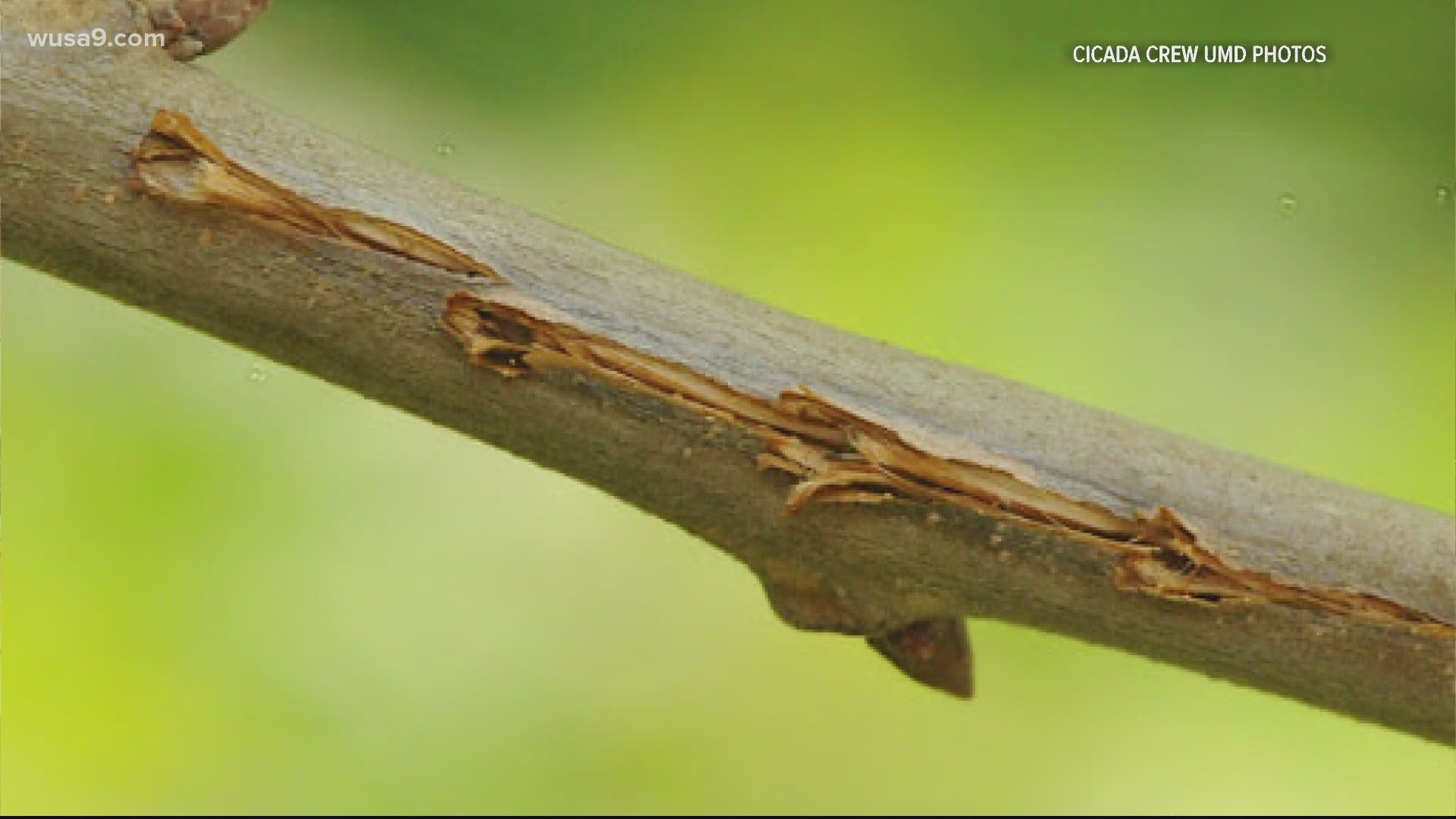WASHINGTON — The usual city sounds - traffic, music, conversation - will soon be overwhelmed by the chatter of Brood X cicadas. After 17 years of hiding, these bugs are already starting to emerge in D.C., Maryland and Virginia.
But will these billions (yes, billions) of flying, red-eyed critters coming to the D.C. area harm your trees and plants?
It depends, says Dr. Paula Shrewsbury, an entomologist at the University of Maryland.
"[Their] feeding causes very little damage to the trees," Shrewsbury said.
It's when they lay eggs that problems can arise, as they make little slits on the branches and lay their eggs inside of them. Each female can lay between 400 and 600 eggs.
All of those slits can kill the branch and eventually the whole tree, Shrewsbury said. Smaller trees are more vulnerable than bigger trees.
So how can you protect your trees?
RELATED: 'It’s this link to the past' | Researchers share the new technology helping to locate cicadas
You actually don't have to do anything to protect your large trees, according to Shrewsbury. But for smaller trees, Shrewsbury said the best way to keep them safe is to put netting over them to keep the cicadas out.
That netting needs to be 3/8 of an inch or smaller, otherwise, the cicadas can get through.
Worried about your flowers? Don't be.
"Cicadas don't cause damage to flowering plants," Shrewsbury said. "A lot of people worry about their herbaceous perennials or annuals...they'll be on there crawling around but they're not going to really cause damage."

